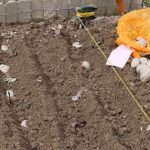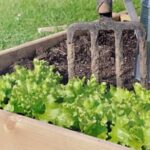Are you interested in growing your own vegetables but have limited space? If so, then you’ll want to learn all about square foot vegetable gardening. This innovative approach to gardening allows for the efficient use of space, making it ideal for small yards, urban environments, or even balconies. In this article, we will explore the concept and history behind square foot gardening, as well as the many benefits it offers.
Square foot gardening was popularized by Mel Bartholomew in the 1980s as a way to maximize productivity in a minimal amount of space. The basic idea is to divide your garden into small square sections and plant different vegetables within each section. This method not only makes the most of limited space but also allows for better organization and easier maintenance.
In the following sections, we will delve into the various aspects of square foot gardening, from planning and layout tips to choosing the right vegetables for your space. We will also provide step-by-step instructions for planting and caring for your garden throughout the growing season, as well as tips for overcoming common challenges. Whether you’re a beginner or a seasoned gardener, there’s something here for everyone looking to create a thriving square foot vegetable garden.
Benefits of Square Foot Gardening
Square foot gardening offers a multitude of benefits that make it an attractive option for both novice and experienced gardeners. One of the primary advantages is its space-saving nature. By utilizing a small, organized space, individuals can maximize their yield while minimizing wasted land. This is particularly advantageous for those with limited outdoor space or who live in urban areas where access to land for gardening may be scarce.
Another benefit of square foot gardening is its efficiency. With this method, each square foot of the garden is carefully planned and utilized, resulting in higher yields with less effort. Additionally, the close proximity of plants in a square foot garden can create shade and protection from certain pests, reducing the need for chemical pesticides. This makes it an environmentally friendly and sustainable option for growing vegetables.
Furthermore, the organization and structure inherent in square foot gardening make it easier to manage and maintain. With clearly defined sections for different types of plants, it becomes simpler to track growth, identify and address issues such as diseases or pests, and harvest produce as it ripens. This level of organization also makes it easier for gardeners to rotate crops seasonally, helping to maintain soil fertility and reduce the risk of plant-specific diseases developing over time.
Finally, square foot gardening can be an excellent option for those looking to engage in companion planting techniques. By carefully selecting which vegetables are planted together within each square foot section of the garden, individuals can create natural pest deterrents and foster mutually beneficial relationships between different types of plants.
| Benefits | Description |
|---|---|
| Space-saving | Maximizes yield while minimizing wasted land |
| Efficiency | Higher yields with less effort; reduces need for chemical pesticides |
| Organization | Makes management and maintenance easier; facilitates crop rotation |
| Companion Planting | Allows for natural pest control methods. |
Planning Your Square Foot Garden
When it comes to square foot gardening, careful planning is key to maximizing the space and ensuring a productive harvest. The concept of square foot gardening was popularized by Mel Bartholomew in the 1980s, emphasizing the use of raised beds divided into square foot sections for efficient and organized planting. This method allows for a greater variety of vegetables to be grown in a smaller space compared to traditional row gardening.
To start planning your square foot garden, it’s important to consider the layout of your garden bed. Using a grid system with each square representing one square foot makes it easier to plan and visualize where each vegetable will be planted. This helps prevent overcrowding and ensures that each plant has enough space to grow and thrive. Additionally, proper spacing reduces competition for water, nutrients, and sunlight among the plants.
Another important aspect of planning your square foot garden is crop rotation. Rotating crops from season to season helps maintain soil health by preventing nutrient depletion and reducing the risk of pests and diseases. By carefully planning which vegetables to plant in each section throughout the year, you can optimize the use of your garden space while promoting long-term soil fertility.
Furthermore, incorporating vertical gardening techniques such as trellises or cages can help maximize space in your square foot garden. Vining vegetables like tomatoes, cucumbers, and beans can be trained to grow vertically, freeing up valuable ground space for other crops. Planning for vertical growth not only conserves space but also improves air circulation around plants, reducing the risk of fungal diseases.
| Aspect | Information |
|---|---|
| Garden Bed Layout | Grid system with each square representing one square foot |
| Crop Rotation | Prevents nutrient depletion and reduces pests/diseases |
| Vertical Gardening | Trellises or cages can help maximize space |
Choosing the Right Vegetables
When it comes to square foot vegetable gardening, choosing the right vegetables is crucial for the success of your garden. Not all vegetables are well-suited for this method of gardening, so it’s important to carefully select what you plant. Here is a guide to help you narrow down your options and make the best choices for your square foot garden:
- Consider the size: Since square foot gardening focuses on maximizing space, it’s essential to choose vegetables that don’t require a lot of room to grow. Look for compact varieties or those that can be grown vertically to make the most of your space.
- Think about yield: Opt for vegetables that produce a high yield in a small area. This will ensure that you get the most out of your garden without overcrowding it.
- Companion planting: Take advantage of companion planting techniques to maximize the use of space and benefit from plants that work well together. For example, planting basil next to tomatoes can help repel pests and improve flavor.
When selecting vegetables for your square foot garden, keep in mind the specific needs of each plant and how they will interact with each other. By choosing wisely, you can create a thriving garden that provides an abundance of fresh produce.
Remember that some vegetables may require more attention than others, so consider your own level of experience and time commitment when making your selections. With careful planning and consideration, you can create a diverse and bountiful harvest in your square foot vegetable garden.
Planting and Care
Preparing the Soil
Before planting your vegetables in a square foot garden, it’s important to prepare the soil properly. Start by removing any weeds and debris from the garden bed. Then, mix in some high-quality compost to enrich the soil and provide essential nutrients for your plants. The goal is to create a loose, well-draining soil that will promote healthy root growth and overall plant health.
Planting Your Vegetables
When it comes to planting in a square foot garden, the key is to maximize space while allowing each plant enough room to thrive. Follow the guidelines of square foot gardening by dividing your garden bed into one-foot square sections and planting different types of vegetables in each section based on their spacing requirements. For example, you can plant 16 carrots in one square, 4 lettuce plants in another, or even 1 tomato plant in its own square.
Maintaining Your Garden
Once your vegetables are planted, it’s important to provide proper care throughout the growing season. This includes regular watering, especially during dry periods, and applying organic mulch to help retain moisture and prevent weed growth. Keep an eye out for any signs of pest or disease damage, and take appropriate measures to protect your plants. Additionally, consider using natural fertilizers to feed your vegetable plants as they grow and produce delicious harvests.
Square foot vegetable gardening offers a practical approach to growing a variety of vegetables in limited space while maximizing productivity. By following these step-by-step instructions for planting and maintaining your garden throughout the growing season, you can enjoy a bountiful harvest of fresh, home-grown produce right outside your door.
Harvesting and Maintenance
Harvesting and maintaining your square foot vegetable garden is essential for ensuring a bountiful and healthy harvest. Here are some tips to help you maximize your garden’s productivity:
- Harvesting: When it comes to harvesting your vegetables, timing is key. Make sure to pick your vegetables at the peak of ripeness for the best flavor and nutritional value. Regularly check for ripe produce and harvest them promptly. Additionally, don’t be afraid to harvest leafy greens and herbs frequently to encourage new growth.
- Pruning and Deadheading: Regular pruning and deadheading of plants can help promote better air circulation, reduce disease risk, and encourage more prolific fruit or vegetable production. Remove any dead or yellowing leaves, as well as spent flowers, to keep your garden tidy and healthy.
- Weeding: Keep your square foot garden free from weeds that can compete with your vegetables for water, nutrients, and sunlight. Regularly inspect and remove any unwanted plants that may sprout up in your garden bed to maintain its health and productivity.
Maintaining the health of your square foot garden is crucial for long-term success:
- Soil Maintenance: Regularly check the soil moisture level and provide appropriate irrigation as needed. Consider adding compost or organic fertilizer to replenish nutrients in the soil. A healthy soil structure is essential for strong root development and plant growth.
- Pest Control: Keep an eye out for common garden pests such as aphids, caterpillars, or snails that can damage your crops. Implement natural pest control methods like companion planting or using organic pest deterrents to protect your vegetables.
- Disease Prevention: Monitor your plants regularly for any signs of diseases such as powdery mildew or blight. Remove any infected plants promptly to prevent the spread of diseases within your garden. Proper spacing between plants can also help improve airflow and reduce disease risk.
By following these tips for harvesting and maintaining a square foot vegetable garden, you can enjoy a productive and thriving growing season while reaping the benefits of fresh, homegrown produce all summer long.
Overcoming Common Challenges
When it comes to square foot vegetable gardening, there are common challenges that gardeners may encounter along the way. These challenges include dealing with pests, diseases, and environmental factors that can affect the health and productivity of your garden. However, with proper knowledge and management techniques, these challenges can be overcome, allowing you to enjoy a bountiful harvest from your square foot garden.
Dealing With Pests
One of the common challenges in square foot gardening is dealing with pests that can damage your vegetables. Pests such as aphids, caterpillars, and slugs can wreak havoc on your plants if not managed properly.
One way to address this issue is by practicing companion planting, which involves growing certain plants together to repel pests or attract beneficial insects. Additionally, using natural pest control methods such as introducing beneficial insects like ladybugs or using insecticidal soap can help minimize pest damage in your garden.
Preventing Diseases
Diseases such as powdery mildew, blight, and root rot can also pose a threat to your square foot garden. To prevent the spread of diseases, it is important to practice good sanitation by removing any infected plant material and avoiding working in a wet garden to prevent the spread of fungal spores. Choosing disease-resistant vegetable varieties and providing adequate air circulation between plants can also help reduce the risk of disease in your garden.
Managing Environmental Factors
Environmental factors such as extreme temperatures, excessive heat or cold, and waterlogged soil can impact the health of your square foot garden. Using techniques like shading delicate plants during hot weather, providing frost protection for tender crops during colder months, and improving soil drainage through raised beds or adding organic matter can help mitigate the effects of these environmental factors on your vegetable garden.
By addressing these common challenges with effective strategies and tactics for pest control, disease prevention, and managing environmental factors in your square foot vegetable gardening efforts will result in a thriving and productive garden.
Success Stories
In conclusion, square foot vegetable gardening offers a wealth of benefits for both individual gardeners and the broader community. By maximizing efficiency and space, this approach allows for the cultivation of an impressive variety of vegetables in a compact area. Furthermore, its accessibility makes it a perfect option for urban dwellers or those with limited yard space. Additionally, the concept’s historical roots and proven success make it a desirable choice for anyone looking to embark on their gardening journey.
One of the most significant impacts of square foot vegetable gardening is its potential to address issues such as food insecurity and community building. Many success stories have emerged from individuals and communities who have implemented this method, resulting in bountiful harvests that not only provide fresh produce but also foster a sense of pride and empowerment. Furthermore, these gardens often serve as platforms for education and engagement within neighborhoods, strengthening bonds and promoting sustainable living practices.
As we continue to navigate challenges such as climate change, resource depletion, and food deserts, the concept of square foot vegetable gardening offers a sustainable solution that is easy to implement and yields significant rewards. By embracing this approach, individuals can take charge of their food production while making positive contributions to their communities.
The success stories shared by those who have embraced this method serve as inspiring examples of the impact that small-scale gardening can have on individuals’ lives and broader societal well-being.
Frequently Asked Questions
What Is the Square Foot Method for Vegetable Gardening?
The Square Foot Method for vegetable gardening involves dividing the garden into square foot sections and planting a different crop in each section based on the number of plants that will fit.
What Are the Downsides of Square Foot Gardening?
While Square Foot Gardening is efficient, some downsides include the initial cost of building the raised beds and filling them with soil. Additionally, there can be limitations on the types of vegetables that can be grown.
How Many Vegetables Can You Have Per Square Foot Garden?
The number of vegetables you can grow per square foot garden varies depending on the specific plant and its spacing requirements. For example, larger plants like tomatoes may only fit one per square foot, while smaller plants like carrots can have multiple per square foot.

If you’re looking to get into vegetable gardening, or are just looking for some tips on how to make your current garden better, then you’ve come to the right place! My name is Ethel and I have been gardening for years. In this blog, I’m going to share with you some of my best tips on how to create a successful vegetable garden.





